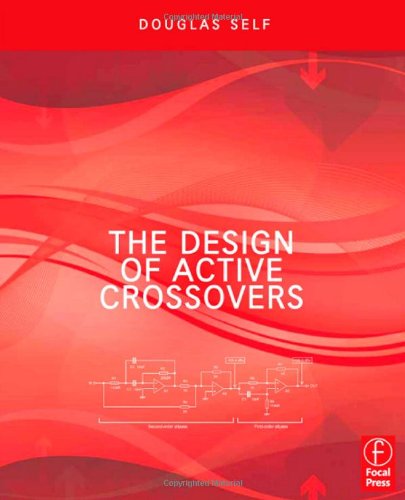The Design of Active Crossovers download
Par smith evelyn le dimanche, janvier 10 2016, 00:37 - Lien permanent
The Design of Active Crossovers . Douglas Self

The.Design.of.Active.Crossovers..pdf
ISBN: 0240817389,9780240817385 | 605 pages | 16 Mb

The Design of Active Crossovers Douglas Self
Publisher: Focal Press
I note that you featured an Active Crossover design in the January 2003 issue. And, as the title will tell you, i am totally new to all this DIY speaker crossover lark. And if you have active speakers (mains and subs) with digital inputs are your considerations still valid having the additional benefit of active crossover designs in those active speakers? Now I need a second pair of gainclones to make sure all frequency matched! (This was sent to me by DefTech when i emailed them-they also sent the schematic for the crossover if this helps) Has anyone designed an active crossover that i can use or can you point me in the right direction please. One of the more unique aspects of the ULP is the utilisation of an active crossover rather than the traditional passive crossover found in 95% of commercial designs. This helped with the design of the drive units, cabinets, crossovers and important detailing such as the size, shape and profile of the midrange dome dispersion flange to provide optimal sound distribution and integration. Both of those things would incorporate a few (or lots of) buffer stages. With a passive crossover, it is usually positioned inside the speaker and the speaker designer presets the crossover frequencies to achieve the sound he wants for the speaker design. Increased from flat), a detail also borrowed from PMC's professional background and experience with active crossover design. Also I don't know why the new pair runs hotter even though they are exact same design. With the exception In another first, the fact.12 is the only passive loudspeaker to incorporate a true LF boost setting (i.e. 28/12/07 - Completed active crossover setup. If you only require filters which can be made passive then passive crossovers can be great but otherwise (if you require other filter types) then you have a design problem. Lets start by describing an active crossover. I have also wanted to design an active crossover, both as a kit and for my own projects. However, the noise and distortion figures of the crossover would negate the advantages of the Class-A Stereo Amplifier. His rigorous, skeptical, and thoroughly practical approach to design has been applied to the small signal area as well, and some of the results can be found in his recent book, The Design of Active Crossovers. I believe the title says it all.
Lines and Curves: A Practical Geometry Handbook book download
Neural Network Learning: Theoretical Foundations ebook